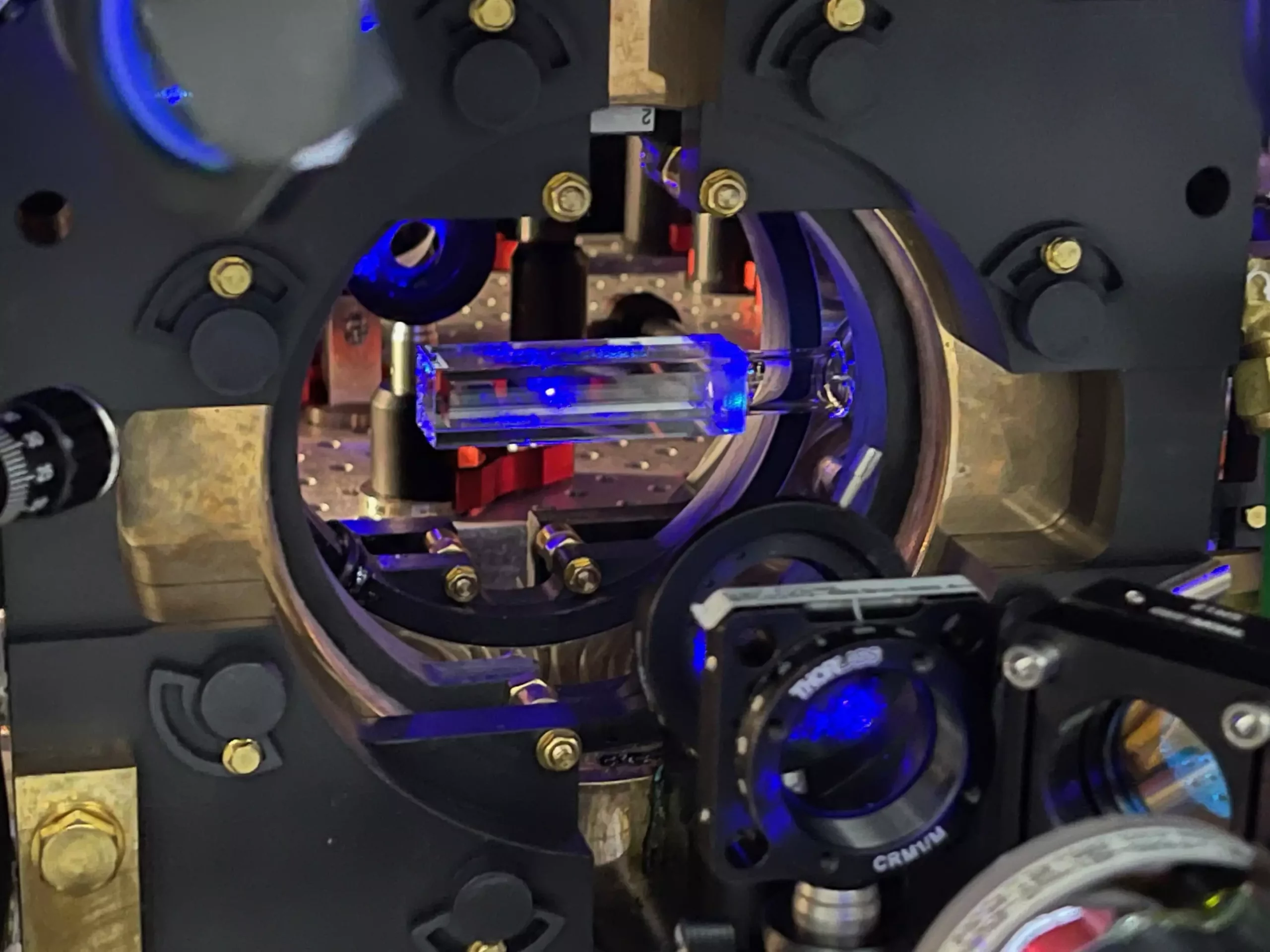

Quantum physics has paved the way for high-precision sensing techniques that allow scientists to delve deeper into the microscopic properties of materials. Among the emerging analog quantum processors, quantum-gas microscopes have emerged as powerful tools for understanding quantum systems at the atomic level. These devices have the capability to produce images of quantum gases with unprecedented resolution, allowing individual atoms to be detected. In a recent study by ICFO researchers in Barcelona, Spain, a unique quantum-gas microscope named QUIONE was developed to explore the atomic nature of strontium quantum gases. This groundbreaking research highlights the potential of strontium as a key element in quantum computing and quantum simulation.
Traditionally, quantum-gas microscopes have relied on alkaline atoms like lithium and potassium due to their simpler properties in terms of optical spectrum. However, strontium, an alkaline-earth atom, offers a wealth of unique properties that make it an attractive candidate for quantum simulation experiments. The distinct features of strontium have positioned it as a popular element for applications in quantum computing, with the ability to serve as an atomic quantum processor capable of solving complex problems beyond the capacity of classical computers. The decision to focus on strontium for quantum-gas microscopy was driven by its potential to unlock new phases of matter and simulate exotic materials.
The development of QUIONE involved a series of meticulous steps to bring the strontium gas into the quantum regime. By utilizing the force of laser beams, the researchers were able to significantly reduce the speed of atoms, bringing them to a near-motionless state with a temperature close to absolute zero. This transition allowed the laws of quantum mechanics to govern the behavior of atoms, leading to the emergence of quantum superposition and entanglement. The activation of an optical lattice, reminiscent of an egg carton structure, facilitated interactions between atoms, giving rise to quantum tunneling phenomena similar to electron behavior in materials.
With QUIONE fully operational, the researchers could capture images and videos of the strontium quantum gas at an atomic level. The microscopic observations unveiled the quantum tunneling effect, where atoms occasionally jumped between lattice sites, showcasing their inherent quantum behavior. Additionally, the team confirmed the superfluidity of the strontium gas by observing interference patterns generated when the lattice laser was turned off. This milestone validated the presence of superfluidity in the sample, marking an exciting moment for quantum simulation.
The successful development of QUIONE has opened up new possibilities for simulating complex and exotic materials using strontium quantum gases. By harnessing the unique properties of strontium in quantum-gas microscopes, researchers can explore novel phases of matter and advance our understanding of quantum phenomena. The integration of strontium into the realm of quantum computing has the potential to revolutionize the field, paving the way for innovative applications and discoveries in the future. As the capabilities of quantum-gas microscopes continue to evolve, the exploration of strontium quantum gases promises to unlock a wealth of opportunities for quantum simulation research.
Despite the term "rare," rare earth metals (REMs) are not nearly as scarce as their…
A collaboration led by Rutgers University-New Brunswick has initiated a paradigm shift in our understanding…
Natural gas leaks are a growing concern in both urban and rural settings, with potential…
Recent groundbreaking research at the University of Vienna has unveiled a novel interplay of forces…
In recent years, perovskites have garnered significant attention in the fields of materials science and…
For decades, astronomers have probed the depths of the Milky Way, grappling with two perplexing…
This website uses cookies.